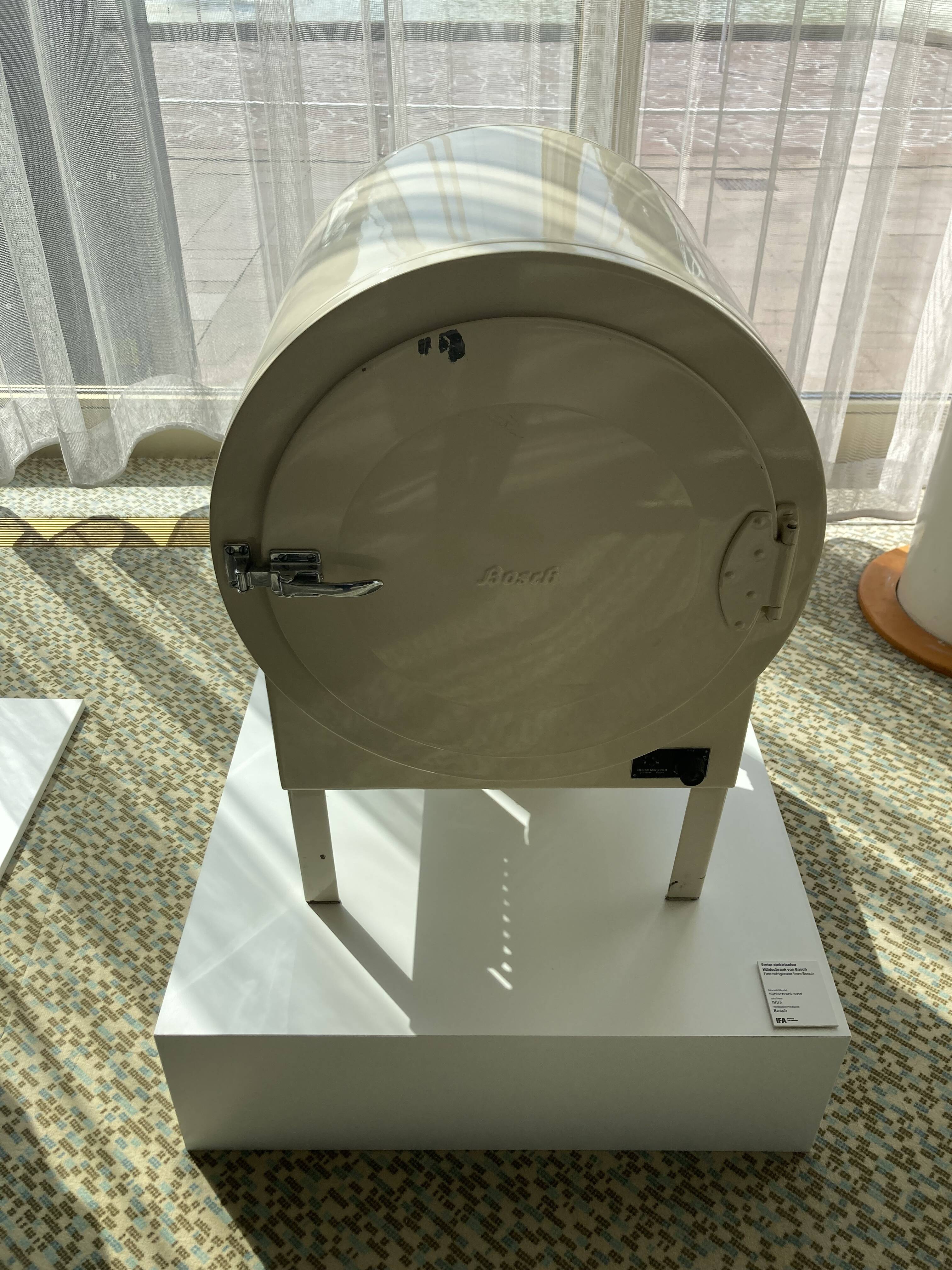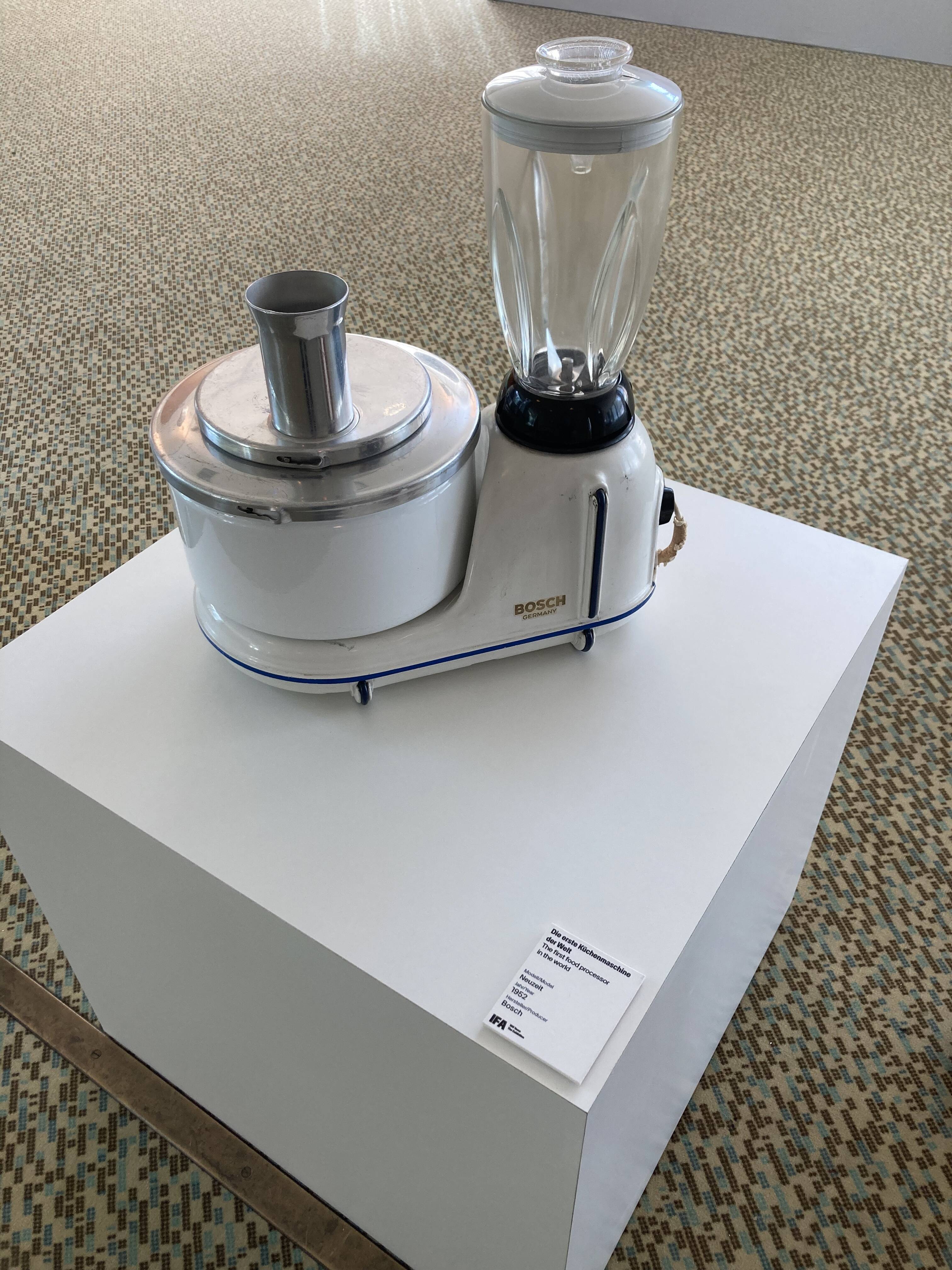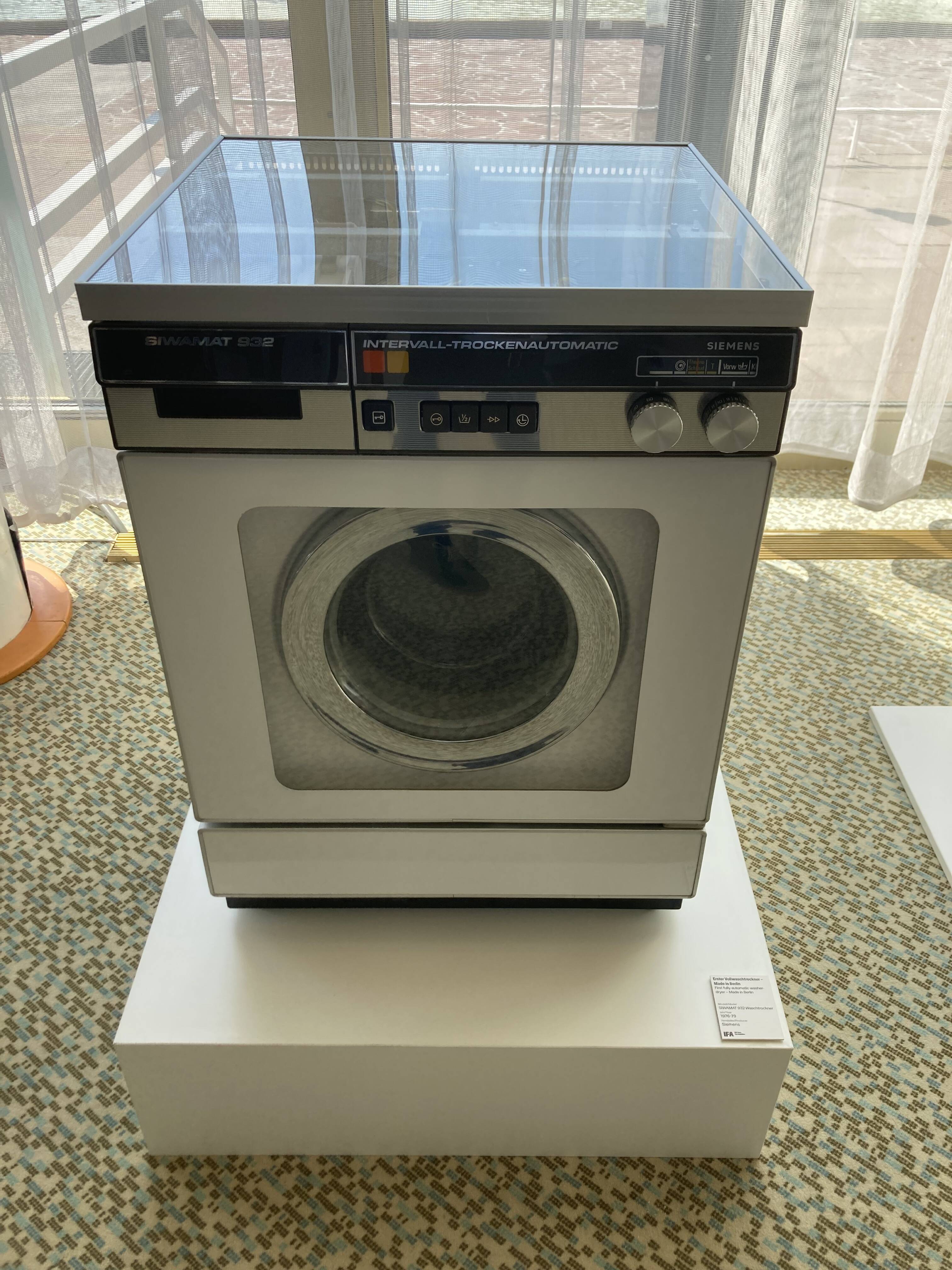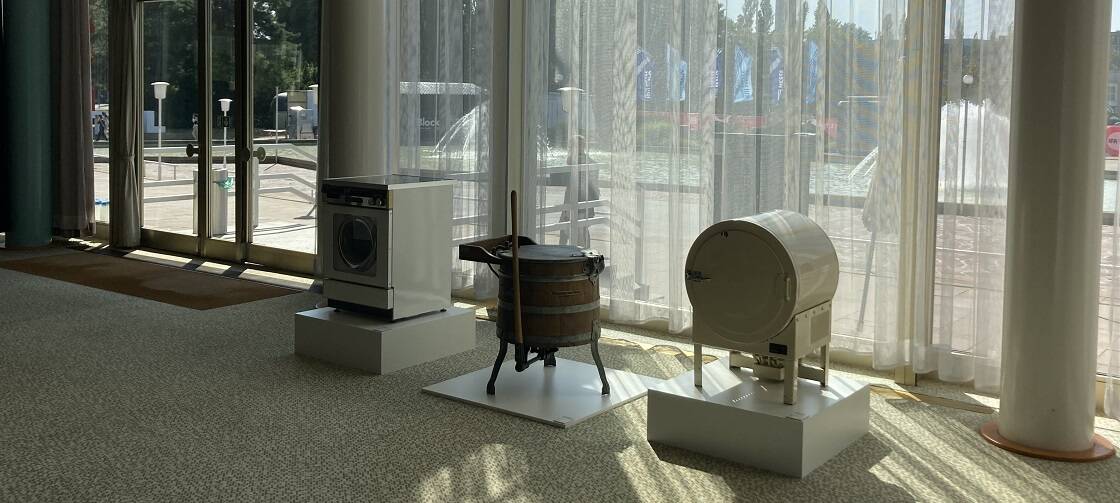Past, present and future united and within reach
Reading time: 3 minutes
In addition to the numerous innovations, BSH also takes a look back into the past.
IFA, one of the world’s leading trade fairs for consumer electronics and home appliances, is celebrating its 100th anniversary this year. After the successful summer at Bikini Berlin, the exhibition "IFA 100 The Exhibition" can be visited in the Palais at the Funkturm in Berlin. Historical exhibits and works of art by eight Berlin-based creative minds are presented. Inspired by IFA’s diverse past and innovative future, the works invite visitors to reflect on the role of technology and creativity in our everyday lives. The aim of the IFA exhibition in Berlin is to make the fascination of the trade fair tangible for people interested in technology and art. Nowadays, trade fairs are a cultural event that moves people and appeals to them emotionally. With the IFA-"time travel", visitors are invited on a journey from the beginnings as an international radio exhibition to real innovations. BSH uses this opportunity to look back on a successful history of innovation.
Half a century of innovation
Among other things, the first mass-produced electric refrigerator for private households in Europe from Bosch as well as the first food processor from Bosch (1925) and the first washer-dryer from Siemens (1976) will be exhibited in the Palais.
More economical housekeeping and family well-being - then as now

More details about the Bosch refrigerator in the history blog on the Bosch homepage.
History of the Bosch food processor

The first "Bosch Food Processor New Age I" was built from 1952 in versions A to E until 1968. This was followed by the kitchen machine types "New Age II" (from 1958 to 1968, initially built and offered parallel to the I) and "New Age III" from 1968 to 1978. The II has, in contrast to the I, the mixing bowl drive not from below, but a boom, from which, for example, the stirring brooms from above can work dough and the like. The III then returns to construction principle of the I. In the 1979 catalog, a machine of type UM 41 appears for the first time, which again has a boom like the II (but not the second output for the mixer attachment), and in parallel the UM 3 is offered, which constructively to the III (and thus also the I) connected.
These two variants are then built parallel - so the picture concludes - through the eighties and nineties, from the beginning of the nineties with the abbreviation "MUM" and four-digit number keys.
Other interesting details, such as: " the housewife has the same daily calorie requirement as a locomotive driver to cope with her varied activity" and how this affects the development of a food processor in the history blog on the Bosch homepage.
The housewife goes out

Siemens first came into contact with washing machines in the early 1920s. Under the name Protos, the so-called "bubble washer, the first appliance was sold in 1925, which showered the laundry overnight. It washed the clothes through permanent water circulation, had an electric heater and a shower head. So the housewife could take out the clean laundry in the morning.
In the late summer of 1956, a semi-automatic machine was produced for the first time at Siemens. This was followed by a number of further developments until 1976 when the full washer-dryer SIWAMAT 932 "Made in Berlin" was available. The drum held 5.5 kg of laundry and was equipped with a thermos blower. The program sequence became visible via a film tape display. The base board of this device served as a preliminary stage of an electrical board with plugged components. Another special feature: The SIWAMAT 932 had the first energy-saving program and a water-saving button (since 1976).




